Mawra Tahreem’s work is an exploration and representation of organic forms. The use of pattern in her work is integral to its message; that the ‘inner-self’ is changeable. She works in a variety of disciplines, but always with a strong textile context; her work to date has included sculpture, installation and weavings.
In our interview with the artist, she talks about how observation of human beings influences her work and how she feels that being too specific about categorising her work places boundaries on her artistic process.
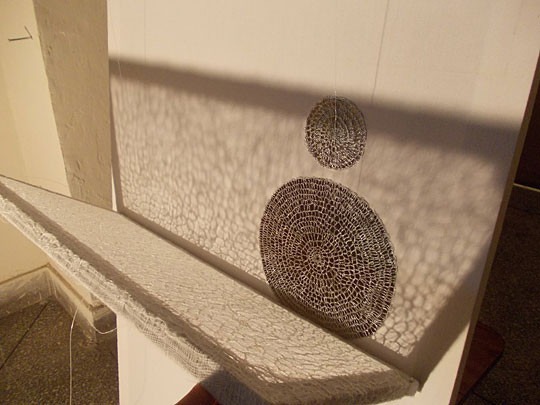
Softness, fragility and flexibility
TextileArtist.org: What initially captured your imagination about textile art?
Mawra Tahreem: Textile art is pleasing to me because of its tactile nature, softness, fragility and flexibility. It can be used in so many ways either as a flat surface or in the form of sculpture. I am interested in all types of art, but my interest in textiles increased and increased, especially as I explored works by Ayesha Khalid , Do ho Suh, Noriko Ambe and Faig Ahmed.
What or who were your early influences and how has your life/upbringing influenced your work?
Looking back I’ve always been around drawing tools, colours, fabrics and sewing since my childhood. My mother would sew traditional clothes for me and my doll, I would steal my father’s technical drawing tools from his cupboard to draw and my mother assigned me little projects with paper pulp, clay and beads. This was when my love for textile art began. My mother used to sew a lot of dresses for me and embellished them with embroidery, beads, ribbons & sea shells, so I started playing with all the leftover scraps to make accessories.
I started sewing at 14 and soon after began to design my own clothes in ethnic styles with various patch work. As well as making clothes, I painted, drew and made stuffed sculptures. I was just producing all the time and if I wasn’t making I was thinking about it or going to the internet to look for inspiration.
What was your route to becoming an artist?
I think of art as a story which never ends – we can all be inspired by everything around us in every moment. It’s a never-ending chain… it’s magical. Art education and studio practice alone cannot make us into artists – to be an artist we need a specific type of imagination and thought process.
I grew up in Pakistan and studied BFA (Honors) in Textile Design from Institute of Art & Design, GCUF. I studied painting, sculpture, calligraphy, graphics and interior design as minors and textile as my major. I learned some essential techniques and concepts and explored multiple mediums which gave me the opportunity to create work according to my desires. It also opened me up to what is achievable through textiles – it doesn’t just have to be functional, and it can be used in any art form.
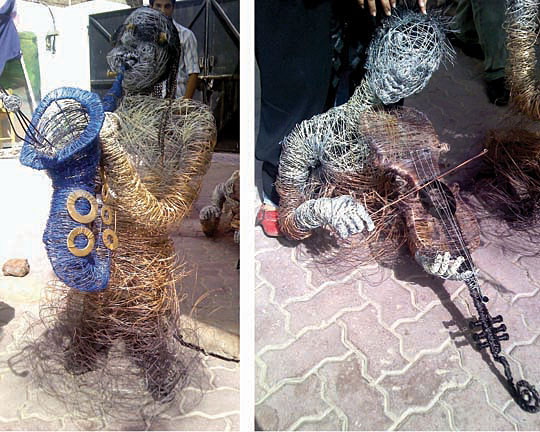
Multiple mediums and technique
What is your chosen medium and what are your techniques?
I find pleasure in multiple mediums and techniques. I have done work in paintings, wire sculptures, weaving, tapestry, typography, marbling, quilting, screen printing, origami etc. I like to apply my knowledge in a multidisciplinary context, be it in making an art piece or applying it in interior spaces as an installation.
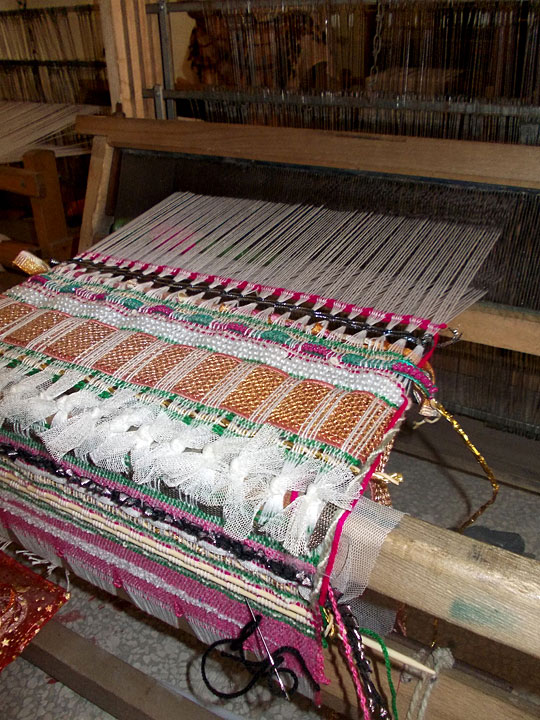
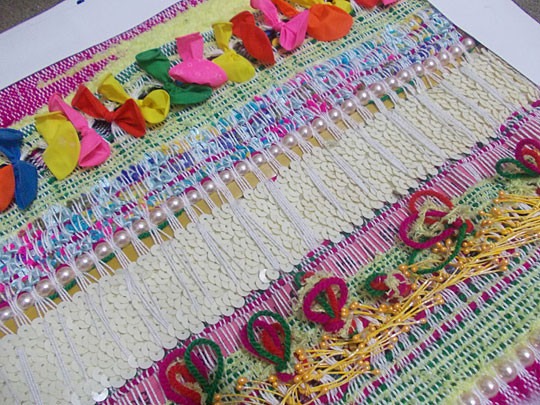
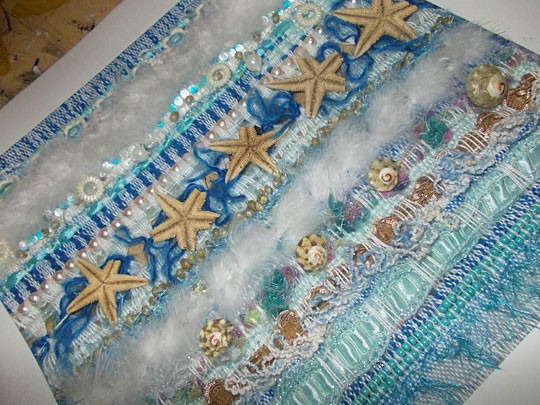
My recent work is an exploration and representation of organic forms which I create through “marbling”. The themes are based on perceptions, emotions, thoughts and experiments. When marbling I’m interested in observing the power of small amounts of air, which changes the growing shapes. These growing shapes become an entity in themselves. I generally use pure water base with acrylic paints and marbling inks. After marbling, I transform these patterns on fabric through hand embroidery, machine embroidery and knitting. I use silk, cotton and net for marbling and scrim fabric for embroidery. I diffuse and shred the fabric before moving on to the embroidery stage.
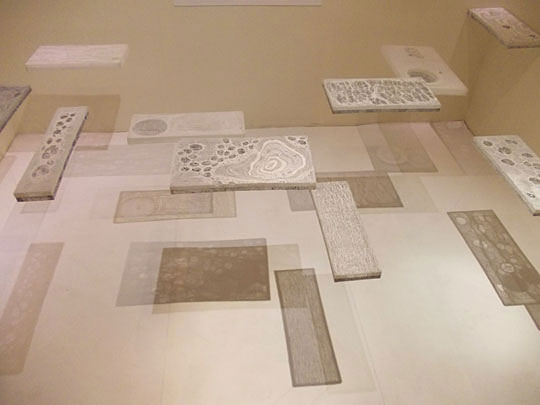
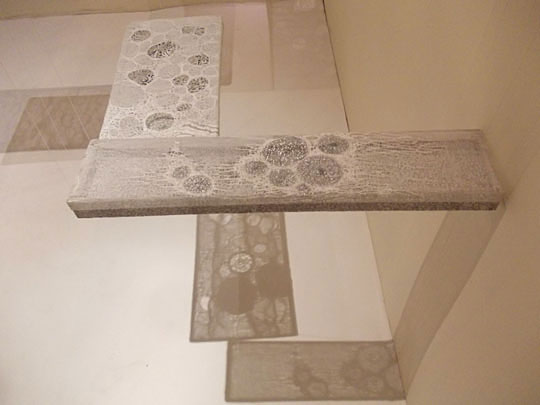
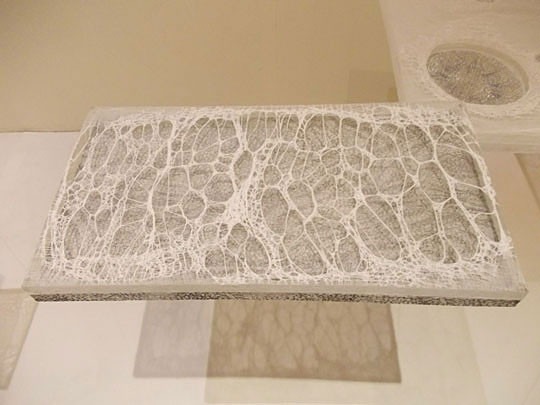
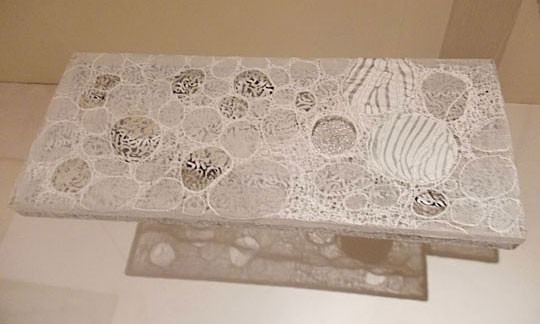
How would you describe your work and where do you think it fits within the sphere of contemporary art?
Contemporary art is such a vast term, it doesn’t really have any boundaries. So, I can not place my work within these borders.
Tell us a bit about your process and what environment you like to work in?
My process begins with a lot of thinking which in turn transfers into research, sketching, sampling with different mediums and techniques. Then I finalize some of the best developments and then turn this into the final piece.
Most importantly, I need silence to concentrate on my work. Because of this I used to only work at night but now I tend to work anytime I want.
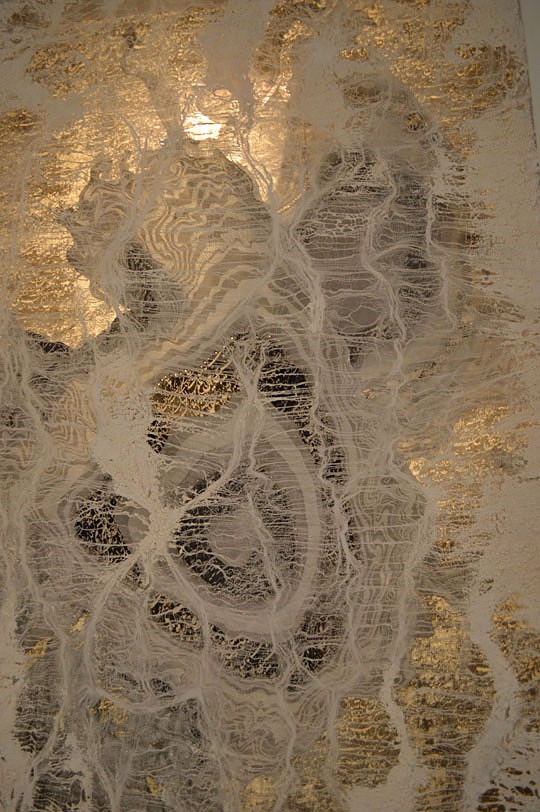
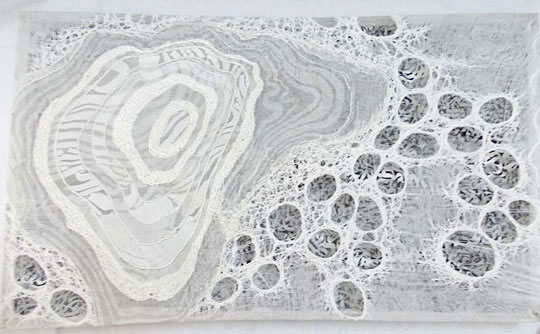
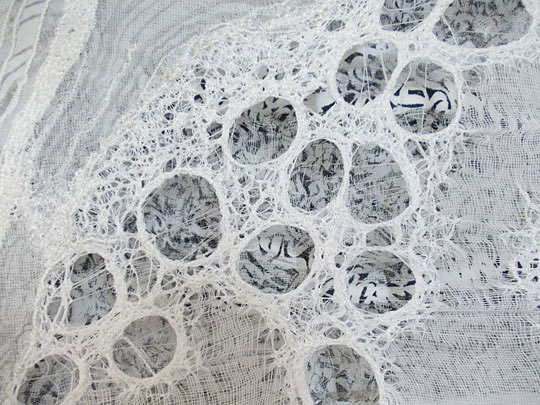
Human uniqueness
Do you use a sketchbook?
Yes sure, I use a sketchbook and journal for writing down my ideas.
What currently inspires you and which other artists do you admire and why?
I always keenly observe human beings and believe that every person is unique. The elements of our uniqueness are our perceptions, thoughts, expressions, behaviors, patterns – all of these things make us what we are. In the future I want to do work on human behavior. I also have a great love for ethnic culture, which I’d also like to explore.
Artists I personally like are Do ho Suh and Peter Gentenaar. Do Ho Suh’s architectural installations always appeal me. Netherlands based paper sculptor, the great Peter Gentenaar’s floating paper sculptures have inspired me a lot. His sculptures start out as two-dimensional colored sheets of pulp; the waves and textures are caused by pulp drying and shrinking in harmony. The simple and natural drying processes develop, over time, the pieces’ unique colors, textures and forms; these characteristics, ultimately lead the final outcome to resemble naturally-occurring forms. I have a great wish that I could do work in his Royal Dutch Paper Factory.
What advice would you give to an aspiring textile artist?
I don’t feel that at this stage I can give advice to anyone. Pablo Picasso says:
“Every child is an artist. The problem is how to remain an artist once we grow up.”
So don’t be afraid to experiment!
Tools, workshops and exhibitions
Can you recommend 3 or 4 books for textile artists?
Usually, I do research on the internet, so I have little knowledge of books. There are however few books which I recommend.
[easyazon_link asin=”0500516456″ locale=”UK” new_window=”default” nofollow=”default” tag=”wwwtextileart-21″ add_to_cart=”default” cloaking=”default” localization=”default” popups=”default”]“Textiles” written by Mary Schoeser contains the art of textiles through the ages.
The second book is for weavers, [easyazon_link asin=”1408134446″ locale=”UK” new_window=”default” nofollow=”default” tag=”wwwtextileart-21″ add_to_cart=”default” cloaking=”default” localization=”default” popups=”default”]“Warp & Weft” by Jessica Hemmings .
[easyazon_link asin=”0812281888″ locale=”UK” new_window=”default” nofollow=”default” tag=”wwwtextileart-21″ add_to_cart=”default” cloaking=”default” localization=”default” popups=”default”]Marbled Paper: Its History, Techniques, and Patterns . This book explores the power of colors on water surface.
[easyazon_link asin=”1849941211″ locale=”UK” new_window=”default” nofollow=”default” tag=”wwwtextileart-21″ add_to_cart=”default” cloaking=”default” localization=”default” popups=”default”]“Stitch & Structure” by Jean Draper is a fresh approach to two-dimensional and three-dimensional textile art.
And the last one is not related to textile art but is a novel associated with miniature artists, [easyazon_link asin=”0571268838″ locale=”UK” new_window=”default” nofollow=”default” tag=”wwwtextileart-21″ add_to_cart=”default” cloaking=”default” localization=”default” popups=”default”]”My Name is Red” by Orhan Pamuk . It is a story of the Ottoman era’s miniature artists.
What piece of equipment or tool could you not live without?
Of course without my mind I am nothing.
Do you give talks or run workshops or classes? If so where can readers find information about these?
I am available on my Facebook page or website for talks. Hopefully in coming months I will upload a few videos and write some blog posts about my work on my website.
How do you go about choosing where to show your work?
My work will come to light in 2015. Anything that is coming up goes on my website or Facebook, if anyone wants to see what I am up to.
For more information please visit: www.mawratahreem51.wix.com/mawrat
If you’ve enjoyed this interview with Mawra let us know by leaving a comment below
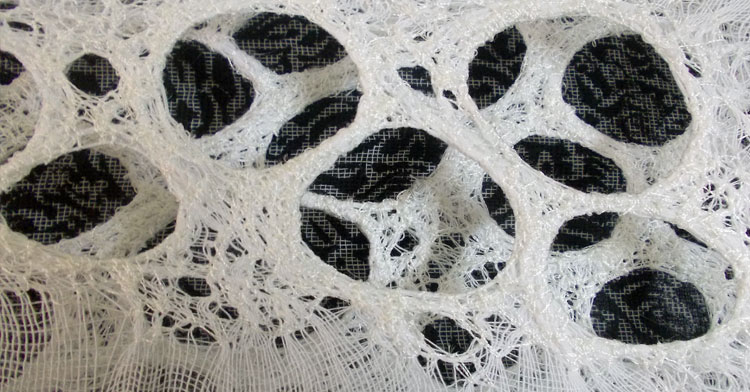
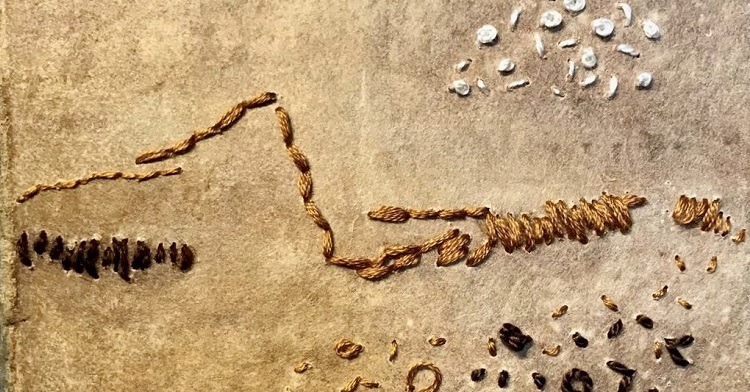
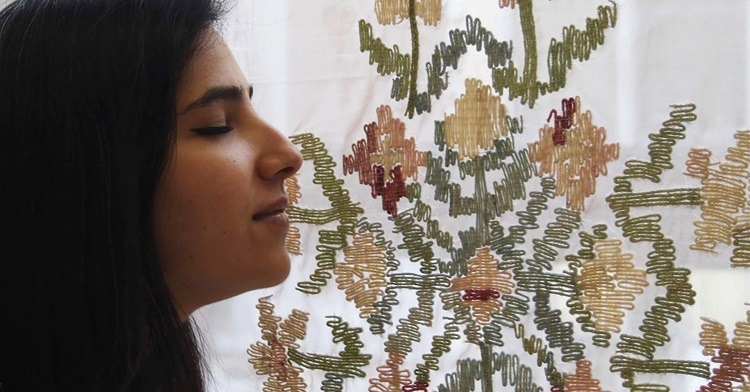
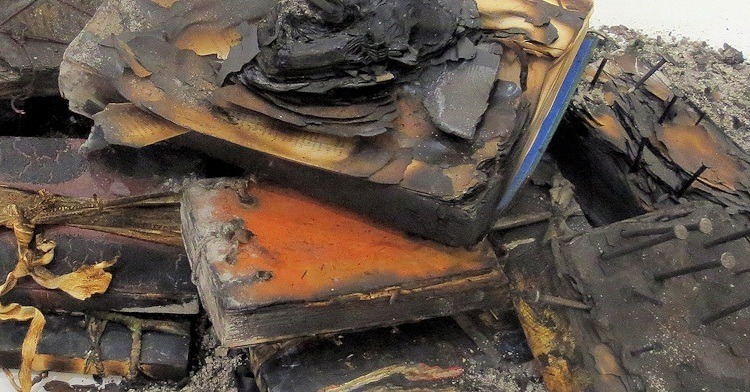
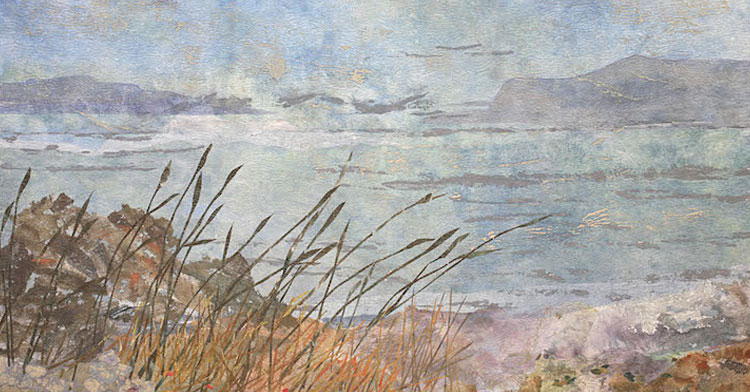
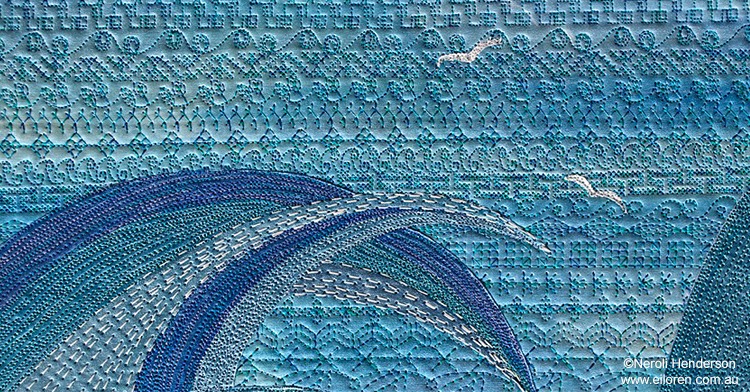
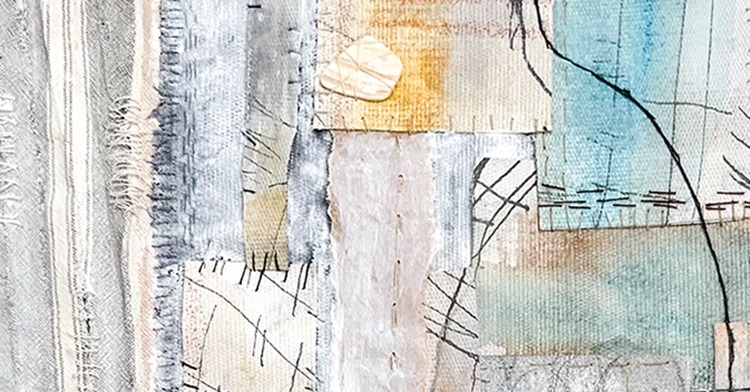
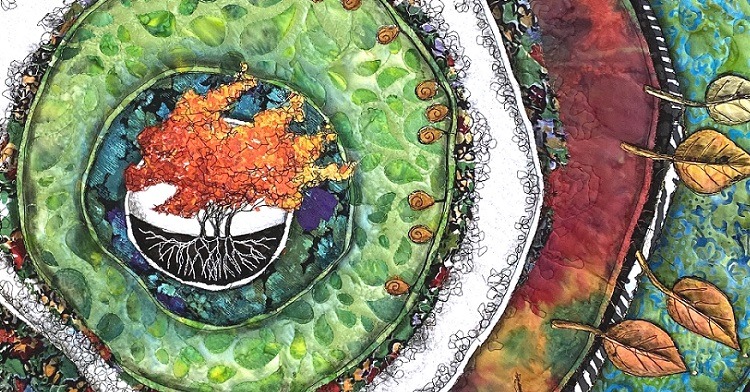
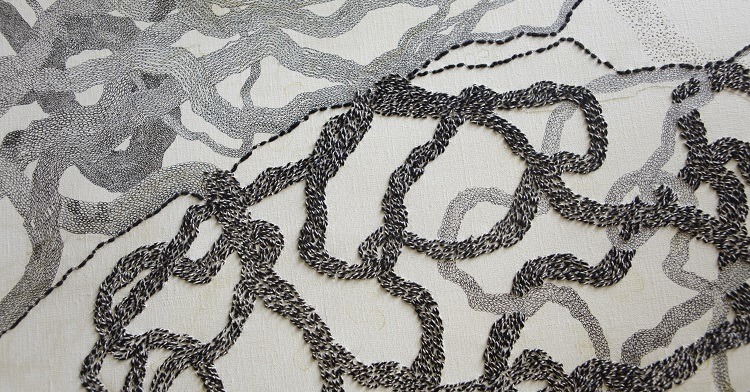
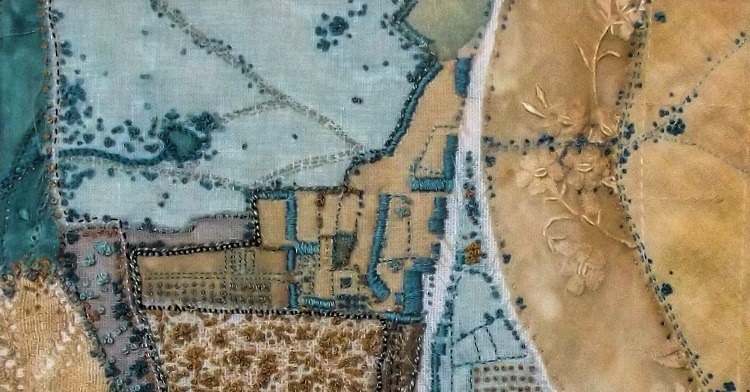
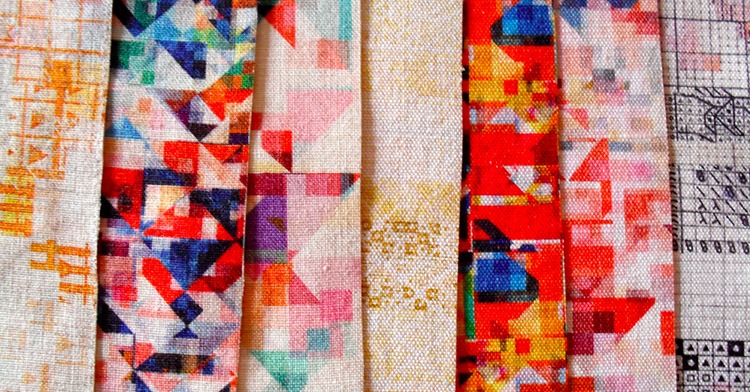
Comments